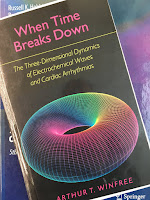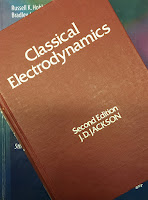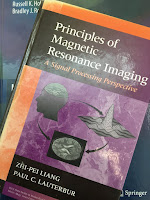 |
| Sync, By Steven Strogatz. |
Strogatz (2003) discusses phase-resetting and other nonlinear phenomena in an engaging and nonmathematical manner.
 |
| The Geometry of Biological Time, by Art Winfree. |
I walked across the street to Heffer’s Bookstore to browse the books on biomathematics… As I scanned the shelves, with my head tilting sideways, one title popped out at me: The Geometry of Biological Time. Now that was a weird coincidence. My senior thesis on DNA had been subtitled “An Essay on Geometric Biology.” I thought I had invented that odd juxtaposition, geometry next to biology. But the book’s author, someone named Arthur T. Winfree, from the biology department at Purdue University, had obviously connected them first.Strogatz then relates how he corresponded with Winfree, and ended up working with him at Purdue in the summer of 1982. He quotes Winfree’s letters, often written in what Strogatz calls “idiosyncratic code.” This characteristic style brought back memories of my own correspondence with Winfree. Although we only met in person once, I recall us exchanging many emails about cardiac dynamics, with his emails all in that same idiosyncratic code. As I read Winfree’s letters to Strogatz, I found myself thinking “yes, that is exactly the way Winfree would have said it.”
 |
| When Time Breaks Down, by Art Winfree. |
Strogatz describes Winfree’s untimely death in the epilog of Sync.
Tragically, Art Winfree died on November 5, 2002, at age 60, seven months after being diagnosed with brain cancer. He helped me with this book at every stage, even when he was conscious only for a few hours a day. Though he did not live to see it published, he knew that it would be dedicated to him.For more about Winfree’s career, see his website (still available through the University of Arizona), the obituary Strogatz wrote for the Society for Industrial and Applied Mathematics, another by Leon Glass in Nature, and also one in the New York Times.
I described my own interactions with Winfree, and some of his contributions to cardiac electrophysiology, in my paper “Art Winfree and the Bidomain Model of Cardiac Tissue,” published in a special issue of the Journal of Theoretical Biology dedicated to his memory (Volume 230, Pages 445–449, 2004). Other particularly interesting contributions to that issue, full of delightful Winfree anecdotes, were the article by his daughter Rachael, and the article by George Oster.
I thoroughly enjoyed Sync. It is a fine introduction to the mathematics of synchronization and nonlinear dynamics. (Don’t, however, consult the book to learn how lasers work!) Sync ends with a lovely paragraph that explains what motivates scientists:
For reasons I wish I understood, the spectacle of sync strikes a chord in us, somewhere deep in our souls. It’s a wonderful and terrifying thing. Unlike many other phenomena, the witnessing of it touches people at a primal level. Maybe we instinctively realize that if we ever find the source of spontaneous order, we will have discovered the secret of the universe.Alas, my to-do list never gets any shorter. Strogatz has a new book coming out next month, The Calculus of Friendship: What a Teacher and a Student Learned about Life while Corresponding about Math, and I plan to read it as soon as I get a bit of spare time.









